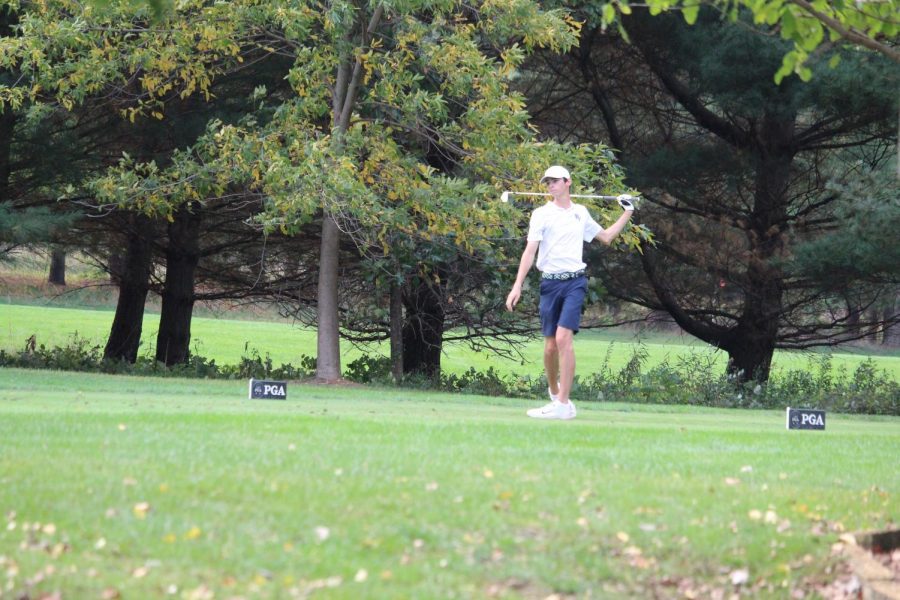Since the beginning of sports competitions centuries ago, the practice of good sportsmanship and character have been established as unwritten rules of the game. It is engraved in the history of sports to express respectful behavior and uphold the integrity of each game.
Unfortunately, as the world has increased broadcasting and publicity of competitive sports, the practice of good sportsmanship has begun to falter.
Players who once shook hands with the other team now walk past one another with disgust. Players who onced obeyed the rules officials now curse them out. And players who once played for the name on the front of their jersey now only play for individual glory.
A problem is arising in how players view the game itself. Because of the increase in media and publicity, putting on a “show” on the big screen leads to more excitement and therefore more views. This has made dramatic behavior more acceptable to professional athletes.
As of late, golf has exemplified this poor behavior. One of golf’s greatest trademarks is its prestige and respect. However, in the past 10 years the sport has reverted to the complete opposite. Big names including Brooks Koepka, Patrick Reed and Bryson DeChambeau have earned a reputation for their outrageous behavior on the course.
In the late 1900s, snapping clubs, cursing on the course and screaming at rules officials would guarantee disqualification from the tournament. Meanwhile in this century, this behavior is commended for the outward expression of emotion and excitement.
Previous world number one golfer Brooks Koepka brought this issue to light after a controversial remark to two rules officials in the 2021 Ryder Cup. Koepka cursed at both rules officials after an unfavorable ruling, saying, “‘If I break my wrist, this is on f—— both of you.”’
Koepka is not the first player to have made poor remarks on the course as he is joined with Justin Thomas and others. The normalization of this behavior standardizes the wrong impression of the sport.
One of the major consequences of publicizing instances such as these is how it infiltrates its way into youth sports. Young athletes grow up watching their favorite sports stars on the big screen and work to emulate them. When these professional athletes are outwardly displaying their bad behavior, young children begin to find this behavior acceptable and act recklessly.
Senior golfer Nathan Tillman has noticed this egregious behavior more increasingly in junior golf tournaments. “I’ve played with many people who got a little too emotional over a wayward shot…I’ll admit I get frustrated too, but getting angry doesn’t change anything and it ruins the game,” Tillman stated.
These egregious actions are not only degrading for the player, but can even be dangerous to their teammates and opponents. Tillman has encountered situations like this on the golf course. “A couple times it got so out of hand I was more worried about my safety than my score,” said Tillman.
For how exaggerated poor behavior has become, this spike in aggression can largely be attributed to the current generation of athletes.
Famous olympian and World War II veteran Louis Zamperini referenced the transformation of sports before his passing in 2014. “‘In my day no one fell on the track and cried like a baby. We lost gracefully. And when someone won, he didn’t act like he’d just become king of the world, either. Athletes in my day were simply humble in our victory.”’
With sportsmanship flourishing in the 1900s, where did we go wrong?
Zamperini attributes this rise in behavior to the temptations of wealth and the media. “‘I believe we were more mature then…Maybe it’s because the media puts so much pressure on athletes; maybe it’s also the money. In my day we competed for the love of the sport…In my day we patted the guy who beat us on the back, wished him well, and that was it.”’
As sports become more publicized and athletes serve as idols to young fans, there must be a shift in behavior. Childish fits and foolish remarks do not push athletics in the right direction. Stricter disciplinary actions and penalties must be put in place to create a better environment for competition.
Until these fits are extinguished, the problem of bad behavior will remain. Poor sportsmanship will not be solved overnight, but if we refocus on what it means to play a sport, then that will be a bigger win than any championship.










